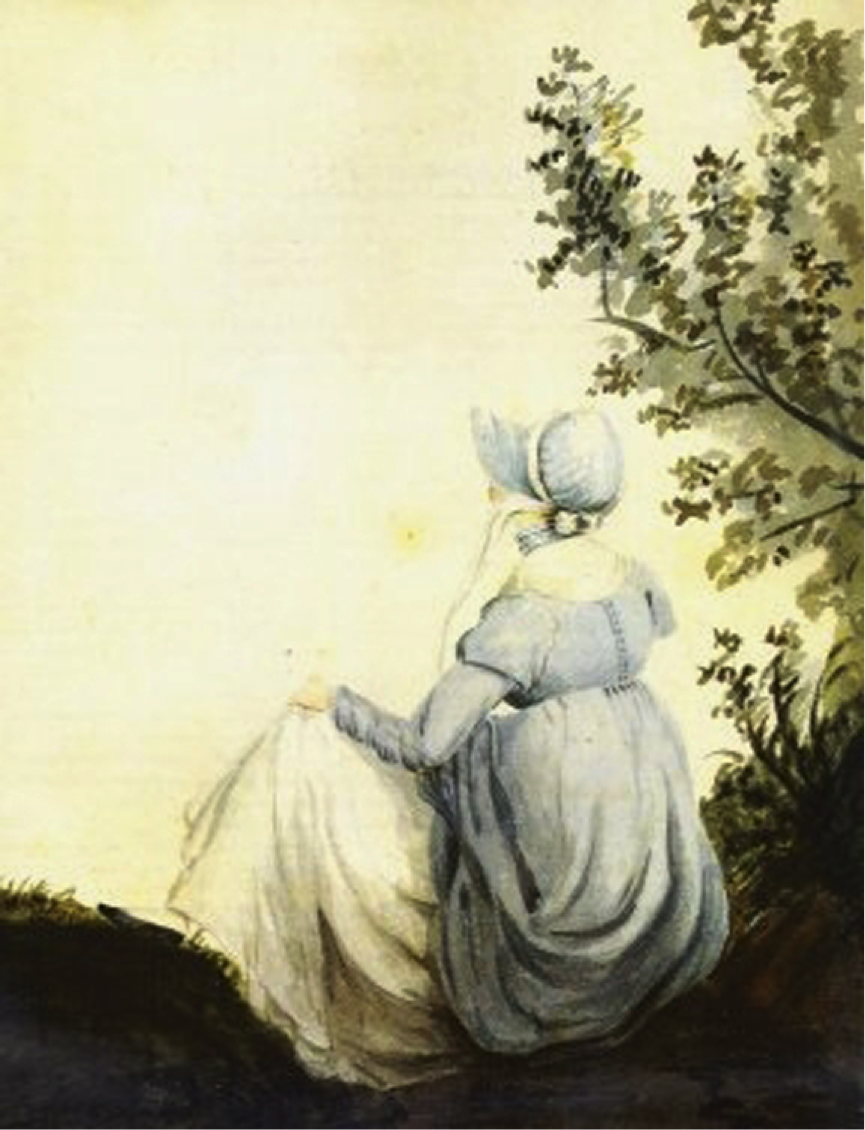Book Review by Brenda S. Cox
“Sunday being given over to devotions at the handsome medieval parish church of St. Mary’s, the reading of Scripture, and retirement . . .”—Jane and the Year Without a Summer
Stephanie Barron has done it again. The fourteenth book in her series of Jane Austen mysteries, Jane and the Year Without a Summer, is both entertaining and informative. Barron weaves a fictional mystery and romance together with real events from Austen’s life and world.
Jane and Cassandra travel to Cheltenham Spa in 1816, since Jane’s health is failing. We know that Jane has just over a year more to live, so probably the series is drawing to a close.

In Cheltenham, they meet a clergyman whose scientific knowledge is driving him to extremes; two artists, one of whom plans a glorious display of transparencies for King George’s birthday, though it doesn’t go as planned; a “fallen” woman who coaches theater people; and a mysteriously frail young lady and her Quaker companion. Eventually, three deaths will mar their holidays, and Jane will have to find out what’s really going on.
Science
The summer is wet and cool, not providing the sunlight that Jane thinks will improve her health. This “year without a summer,” 1816, really happened. A volcanic eruption in Indonesia the previous year filled the atmosphere with ashes. This changed the whole world’s weather patterns, causing famines and disease in many countries for several years. England experienced this as cold, wet summers and crop failures.
Medical science also comes into the story, with a doctor who thinks Jane’s health issues stem from her failure to have children. Edward Jenner, who developed vaccination, is also in Cheltenham but not really part of the story. The medical dangers of tin-mining, which causes exposure to arsenic, are also highlighted. My post yesterday in Jane Austen’s World explores more of the science in Barron’s novel.
Faith
While faith does not play a major role in the story, we do see it in the background. Cassandra reads a sermon each day. We know that Jane also enjoyed reading books of sermons, like many of her time.

Jane and Cassandra attend church at St. Mary’s, the medieval church of Cheltenham. They comment on the sermons of the actual Evangelical preacher there, Mr. Jervis. Jane says, “He spoke on the wonders of natural philosophy [science], as the gift of a benevolent Providence for the improvement of mankind.” This was a popular sermon topic of the time; science and religion were believed to support each other.
Another Evangelical is presented more negatively. The Jane of the novel says some Evangelicals were in high fashion, but she doesn’t like their fervour. (By 1814 the real Jane wrote very positively about Evangelicals, though she may still not have liked their “enthusiasm.”) In the novel, Jane thinks that Evangelicals took “too grim a pleasure in detecting Sin, assuring others that they were themselves quite free of it; and assigning retribution to the rest of us.” This is a caricature of Evangelicals in the Victorian age. However, from what I’ve read, most Evangelicals in the Regency era were not grim, and were very aware of their own sin. In this case, the clergyman identifies himself as “a man of Science” rather than an Evangelical. He draws his pessimistic views from his knowledge of the volcano and what it is doing to the earth. He calls for repentance because he believes the end of all things is near.

A few Quakers also appear in the novel, though we don’t follow them to worship. Quakers had worshiped in Cheltenham since the 1600s. The real Jane and Cassandra knew Quakers in Alton, near Chawton, including the apothecary Mr. Curtis. The theater character in Barron’s novel says “the Society of Friends’ meeting” is “an interval for sacred contemplation.” She attends because she finds “Dissenters [non-Anglicans] more welcoming to ladies of the theatre, than the Devout of the established faith,” which likely was true.
This taste shows you a few of the intriguing characters Jane meets, and difficult situations she finds herself in. But of course our Jane is equal to anything!
I enjoyed this novel. The author gives notes to explain the actual history and science at many points, which I appreciate. And it’s both a good story and a fun way to hang out with Jane Austen and enjoy her world.
Jane and the Year Without a Summer is now available. I hope you will enjoy it! If you want to know more, please check out my review at Jane Austen’s World.
Do you know Christians who see everything negatively, like the clergyman in this story? How can Bible verses like “Rejoice in the Lord always” help us to cope with difficult circumstances, without being unrealistic?



As always, I enjoy anything you post. Including this review. I had no idea that there is a series of Jane Austen mysteries! I like to read Maisie Dobbs and Chief Inspector Gamache. And anything written by Jane and about Jane, but not usually fan fiction. I did read Miss Austen, and enjoyed it. Do you recommend this series, starting at the beginning perhaps?
Keep on posting! Susan Brooks North Carolina Region
>
LikeLike
Thanks, Susan, and yes, I recommend you start at the beginning of the series! Jane and the Unpleasantness at Scargrave Manor is the first one, followed by Jane and the Man of the Cloth. Your local library might have them, check and see! (I love Maisie Dobbs, who I only discovered recently. I don’t know Gamache, but I will check that out; thanks!) These are very high quality fan fiction, with lots of research done.
LikeLike